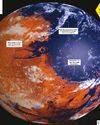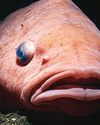
If you’ve ever seen a river rushing down a mountain or played in breaking waves at the beach, you’ll know that moving water contains a lot of energy. A river can push you and your kayak downstream, sometimes very quickly, and waves crashing into you at the beach can knock you back, or even knock you over.
Energy in flowing water
The energy in these moving waters comes from gravity. Water travels around Earth in a water cycle (see below). Water evaporates (turns into a gas) from the surface or is released from plants (transpiration). When the released water vapour is carried up to higher altitudes – such as mountainous regions – it cools down and condenses into liquid cloud droplets. When these cloud droplets become big enough, they fall from the sky as precipitation, either as a liquid rain or – if it is cold enough – as a solid snow.
This story is from the Issue 65 edition of The Week Junior Science+Nature UK.
Start your 7-day Magzter GOLD free trial to access thousands of curated premium stories, and 9,000+ magazines and newspapers.
Already a subscriber ? Sign In
This story is from the Issue 65 edition of The Week Junior Science+Nature UK.
Start your 7-day Magzter GOLD free trial to access thousands of curated premium stories, and 9,000+ magazines and newspapers.
Already a subscriber? Sign In

Are cats smarter than dogs?
They're the UK's top pets, but which is more intelligent? You decide!

Could people turn Mars into another Earth?
Sven Bilén explores how humans might make a home on another world.

FUNNY BY NATURE
Claire Karwowski tracks down the wackiest wildlife that's cracking up the animal kingdom.

WEIRD SCIENCE
A round-up of the strangest science stories from around the world.

Guardians of the forest
Meet the incredible people protecting the Amazon rainforest.

The Mariana Trench
Dive in to find out how far down the ocean goes and what it's really like at the bottom.

Megan McCubbin
Meet the zoologist trying to change people's views of animals with a bad rep.

MAX POWER
From the second you wake up in the morning, your way of life is made possible thanks to the amazing power of electricity.

Your heart has a "brain"
New research by scientists at Sweden, and Columbia University, in the US, suggests that your heart could have its own \"mini brain\".

Ethiopian wolves could be furry pollinators
Sweet-toothed Ethiopian wolves have been seen lapping up nectar have been seen happing up nectar from red hot poker flowers.